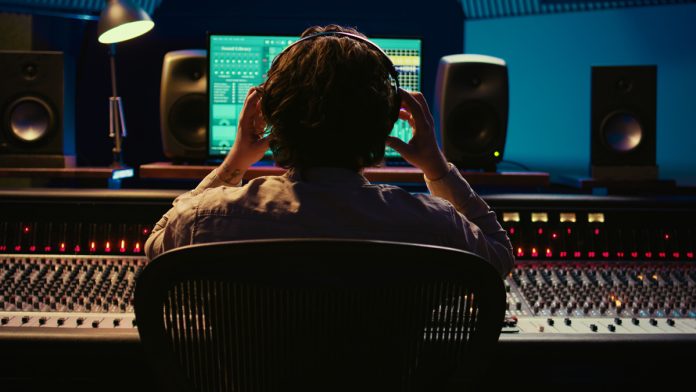Exploring how interactive control is redefining sound synthesis, this article examines transformative trends shaping electronic music production. From early analog experimentation to digital interfaces today, innovations are continuously redefining user experience. Musicians and engineers alike are eagerly anticipating breakthroughs that blend physical intuition with digital precision. Embracing new methodologies and control techniques, designers seek to push creative boundaries in music. The Future of Touch and Gesture Interfaces in Synth Design promises to revolutionize interaction, performance, and composition, heralding a new era for modern synth design.
| Table of Contents | |
|---|---|
| I. | Technological Evolution and Historical Context |
| II. | Enhanced Real-Time Processing |
| III. | Multidimensional User Interfaces |
| IV. | Customization and Modular Design |
| V. | Integration of Haptic Feedback |
| VI. | Artificial Intelligence and Machine Learning |
| VII. | Latency Reduction and Data Throughput |
| VIII. | Immersive Performance Experiences |
| IX. | Collaborative and Networked Environments |
| X. | Accessibility and Inclusive Design |
Technological Evolution and Historical Context
History tells a tale of relentless innovation in synth design. Early synthesizers employed rudimentary keyboards and knobs, gradually evolving into more dynamic, interactive tools. This evolution laid the groundwork for embracing touch and gesture control. As technology advanced, so did the aspiration to integrate physical expressiveness with digital precision, ultimately setting the stage for revolutionary control mechanisms in music creation.
Enhanced Real-Time Processing
Modern developments empower devices to handle vast streams of data instantaneously, crucial for live performances and studio work alike. Engineers continuously refine algorithms to minimize delays, ensuring that every gesture translates seamlessly into sound. This capability is central to crafting responsive interfaces capable of supporting innovative expressive performance. Real-time processing thus underpins the surge towards more immersive, fluid music production systems.
Multidimensional User Interfaces
Synth design is rapidly embracing interfaces that transcend flat, two-dimensional input. Designers integrate touch surfaces, spatial sensors, and gesture-tracking elements to create multidimensional controls. These systems allow users to manipulate sound parameters simultaneously, offering a richer expressive palette. In this context, interfaces evolve into tactile canvases that transform physical gestures into complex sonic textures, fostering experimental performance and creative exploration.
Customization and Modular Design
Pioneering platforms now offer user-customizable modules, enabling artists to tailor interfaces to their creative workflow. This flexibility is essential for adapting control schemes to individual needs. Designers frequently highlight that The Future of Touch and Gesture Interfaces in Synth Design lies in personalizable systems where every musician can construct a uniquely responsive setup. Modular design encourages innovation and interoperability, empowering users to combine elements in novel ways that enhance live performance and studio production.
Integration of Haptic Feedback
Haptic feedback introduces an extra layer of physical connection by providing tactile cues during interaction. The integration of vibrational and force feedback informs users about subtle sound parameter changes, thus simulating the feel of traditional analog equipment. This sensory layer enriches the playing experience by bridging the gap between digital instruments and natural, expressive performance, adding depth and nuance to every gesture.
Artificial Intelligence and Machine Learning
Advances in AI and machine learning offer new ways to predict, interpret, and respond to user gestures. These technologies analyze performance patterns and adapt controls in real time, optimizing sound synthesis for individual expression. In systems where intuitive control meets smart prediction, The Future of Touch and Gesture Interfaces in Synth Design becomes a seamless blend of technology and artistry, opening up unforeseen creative possibilities while streamlining the performance experience.
Latency Reduction and Data Throughput
The quest for near-zero latency remains central to interface innovation. Engineers continuously work to refine system architecture and data flow, ensuring that high-speed processing keeps pace with rapid user input. Reduced latency promotes a natural, intuitive feel during performance, critical for capturing the subtleties of live gesture control. Enhanced throughput supports more detailed signal manipulation, ensuring that every nuance of an artist’s movement is flawlessly rendered into sound.
Immersive Performance Experiences
Immersive environments leverage visual, auditory, and tactile feedback to create a fully engaging performance space. These systems merge sophisticated lighting, spatial audio, and interactive installations with gesture-based synth control, inviting audiences into a multisensory musical journey. As these experiences evolve, they redefine the relationship between performer and observer, blurring the lines between creation and display, and offering transformative, unforgettable shows.
Collaborative and Networked Environments
Networking capabilities now facilitate synchronized performances across devices and locations, fostering collaborative music creation. Musicians share ideas and interactive setups in real time, combining individual strengths into a unified soundscape. Such distributed systems enhance the sense of community and creativity, allowing diverse ensembles to experiment and evolve together. By streamlining connectivity and interaction, these innovations set the stage for new collaborative frontiers in modern synth design.
Accessibility and Inclusive Design
Making advanced synth interfaces accessible to everyone is a key focus for modern developers. Inclusive design practices ensure that systems accommodate diverse physical abilities, learning curves, and creative styles. By prioritizing ease of use without sacrificing expressive potential, developers champion a future where technology is equitable, and musical expression knows no bounds. With adaptive interfaces and thoughtful ergonomics, the movement supports a global community of innovators, ensuring that every aspiring artist can participate fully in the evolving musical landscape.

